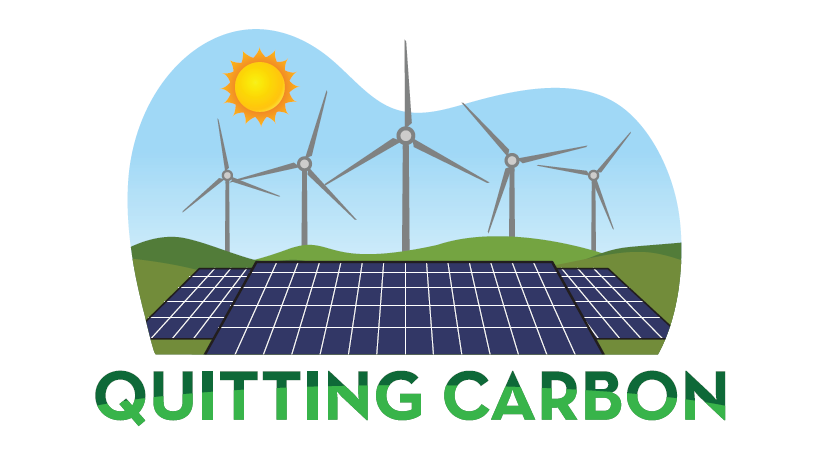What I’m reading: SoCal regulators vote on landmark zero-emission appliance rules, renewable energy is a competitive advantage, offshore wind's added value, and more

Quitting Carbon is a 100% subscriber-funded publication. To support my work, please consider becoming a paid subscriber or making a one-time donation.
The purpose of these bi-weekly roundups is for me to share highlights from what I read every day in my work reporting on and analyzing the energy transition. My goal is to underline important events or trends you may not have read about anywhere else.
If you’ve come to appreciate what you read here, please consider investing in my work by becoming a paid subscriber. Thanks, as always, for reading, subscribing to, and sharing this newsletter.
Southern California air-quality regulators to vote on zero-emission appliance rules
By the time you read this newsletter, the South Coast Air Quality Management District (SCAQMD) is likely to have voted on new rules that would accelerate the transition to zero-emission space- and water-heating appliances in the greater Los Angeles region. As of this writing, the vote is scheduled for Friday, June 6.
The proposed rules have been the focus of an intense lobbying campaign, with SoCalGas, the nation's largest natural gas distribution utility, leading an effort to water down the rules, as Hilary Beaumont reported this week for Floodlight.
Draft rules released in October 2024 would have required that all new furnaces and water heaters installed in the region be zero emission in most residential and commercial buildings by 2026.
"But in recent months, SCAQMD staff have softened the proposed rules. The current version now requires manufacturers to meet zero-emission sales targets for residential buildings, starting at 30% in 2027-28 and rising to 90% by 2036. The rule no longer requires that all new furnaces and water heaters be zero-emission by a certain date," writes Beaumont.
Despite misleading messaging from opponents, the new rules would not force home or business owners to get rid of their existing gas-fired appliances.
"Notably, none of this amounts to a ban on gas appliances or a mandate to rip out functioning units. The goal here is to encourage Californians to replace their gas-powered appliances when their current units kick the bucket or if they’re ready to upgrade," write the UCLA Emmett Institute’s Evan George and Cara Horowitz in a post published yesterday at the Legal Planet blog.
U.S. Attorney Bill Essayli sent a letter yesterday to SCAQMD threatening to sue if its board votes to approve the new rules. I’ll report back on the vote in my next roundup.
Heat pumps becoming standard in Germany’s new homes
Electric heat pumps are increasingly being installed in new homes in Germany. According to the latest data from the country’s statistical office, heat pumps were installed in 69.4% of the 76,100 new homes finished in Germany in 2024, up by 5% compared to 2023.
But if Germany is to hit its 2045 net-zero emissions target, heat pump installations must pick up in existing homes, too.
"Homeowners installed more gas boilers than heat pumps when replacing their heating systems in 2024, though the gap is closing. All in all, four in five residential buildings are still heated with oil and gas in Germany," writes Clean Energy Wire’s Sören Amelang.
Renewable energy is a competitive advantage
For more than a decade, large companies – especially tech giants like Google, Amazon, and Meta – have been among the most aggressive backers of renewable energy in the U.S.
Apart from the climate benefits, these companies know that the cheapest, fastest way to add power to the grid is to install a solar or onshore wind project. States and countries that have figured this out are reaping the benefits that come with hosting low-carbon grids that get cleaner every day.
South Australia has achieved a 74% share of wind and solar on its grid over the past year and is on pace to meet its target of 100% net renewables by the end of 2027. Now, large energy users are flocking to the state, attracted by its clean grid.
"According to ElectraNet, the transmission company that provides the back bone of the state’s grid, there are more than three-dozen companies that have made inquiries about setting up major business in the state and connecting into the state grid, with the specific requirement to source zero emissions and low-cost wind and solar," reports Renew Economy’s Giles Parkinson.
"ElectraNet says the combined load of these 37 big industries amounts to astonishing 15 gigawatts, more than 10 times the current average load in the state, and five times the maximum demand. Far from killing industry, the state’s transition to renewables is sparking a rebirth," he writes.
Offshore wind's added value
One of the main reasons policymakers and grid operators support adding offshore wind to the grid – even if it comes at an upfront cost premium – is the power generated tends to be delivered to the grid at summer or winter peaks when it is needed most. Modeling indicates this should also be true for the offshore wind development zones planned for California and Australia.
"The best guess for the levelised cost of energy (LCOE) for offshore wind in Australia is somewhere close to $200/MWh, which would seem to rule it out as a non-starter if that was the only consideration. So why bother?" asks Giles Parkinson.
The answer, Charles Rattray, the head of Southerly Ten, the company developing the 2.2-gigawatt (GW) Star of the South offshore wind farm in Victoria, told him, is the shape and value of that output.
"Rattray says modelling at Star of the South shows that its output will be strongest at two key times when electricity demand in Victoria will be the highest – in winter evenings and in the midst of summer heatwaves," writes Parkinson.
Over time, adding offshore wind to the power mix should result in lower costs and a more diverse and stable grid in Victoria.
"By tapping into a different weather pattern and wind profile, offshore wind increases the overall availability of Victoria’s renewable energy system, mitigating risk, and reducing power prices through a more diverse renewable portfolio," according to a Southerly Ten analysis Parkinson cites.
"During these peak hours, gas typically sets the energy prices, and therefore replacement would result in significant savings to end consumers. Over the last 10 years, 2GW of offshore wind in Victoria, would’ve replaced 70.5% of the gas required to firm up the energy profile."
Travelers ditch planes for bullet trains in China
I remain bullish on the potential for high-speed rail to flourish here in California one day – despite the delays and higher-than-expected costs – because in countries with extensive bullet train systems, like Spain and China, business travelers increasingly choose trains over planes.
"More passengers shuttling between China’s two biggest cities are choosing to hop on a bullet train rather than a flight, as airlines struggle to match the convenience offered by the country’s ultra-modern high-speed rail network," Frank Chen reported last week for the South China Morning Post.
"The shift to rail has become so pronounced on the busy Beijing-Shanghai route that China’s air travel industry has warned its market is being ‘eroded,’ with airlines scrambling to lure back customers with cheaper tickets and free limousine services."
He added: "Passengers made more than 52 million trips by train between Beijing and Shanghai last year, while only about 8.6 million people took a flight between the two cities, according to civil aviation platform Hangban Guanjia."
"Robust demand has turned the Beijing-Shanghai High-speed Railway into a cash cow for the state-owned rail operator. ... The service generated revenues of 42 billion yuan (US$5.8 billion) in 2024, up 3.62 per cent year on year, with net profits surging more than 10 per cent to 12.8 billion yuan."
Here in California, Governor Gavin Newsom’s (D) revised 2025-26 budget plan, released last month, proposed setting aside $1 billion annually through 2045 in proceeds from the state’s cap-and-trade program for high-speed rail. It is just the kind of budget certainty California High-Speed Rail Authority CEO Ian Choudri said would be needed to attract private investment to help complete the system – even more so after the Trump administration threatened this week to rescind $4 billion in federal funding for the project.
Bonus: John Updike on Ted Williams' final game
John Updike is not remembered as a baseball writer. Novelist, essayist, and master of the short story (including "Pigeon Feathers," perhaps the best American short story ever written), yes, but not a baseball writer. But naturally, when Updike did take up baseball, he produced a work that is among the most beloved and celebrated pieces of literature ever published on the national pastime.
To mark The New Yorker's 100th anniversary, Louisa Thomas recently published a remembrance of Updike's canonical work, an essay from 1960 on Ted Williams' final game titled "Hub Fans Bid Kid Adieu." As every baseball fan knows, the game is remembered for one thing (spoiler alert!): the Red Sox legend hitting a home run in his final at-bat.
Thomas quotes Updike capturing the magical moment as only he could:
"No one should have anticipated what Williams had done. He was forty-two; the Red Sox were bad; the air was heavy with impending rain; and the sky was so dark that the stadium lights had to be turned on – 'always a wan sight in the daytime, like the burning headlights of a funeral procession.' But it was Updike’s insight to see that everyone had expected it, and in fact it was that shared expectation that held them in their seats. 'There will always lurk,' he wrote, 'around a corner in a pocket of our knowledge of the odds, an indefensible hope, and this was one of the times, which you now and then find in sports, when a density of expectation hangs in the air and plucks an event out of the future.'"




